Laboratory of Power Electronics and Electrical Drives
|
Department: Department D 6 - Electrical Engineering and Electrophysics Head: Ing. Radko Semerád |
|
Research is focused on current problems connected with the circuit structures of power electronic converters and algorithms for their control and diagnostics. The mutual interactions of converters with the machines that are fed from them and with the supply networks they are connected to are analysed. Advanced control algorithms of AC drives and multilevel frequency converters are developed and tested experimentally. The ways for avoiding the unfavourable high-frequency phenomena (electromagnetic interference) produced by solid-state converters are studied. In the field of electromagnetic compatibility (EMC) in electric power engineering, control algorithms for active power filters are developed in order to compensate for higher harmonics, unbalanced loads, power factor and flicker, as well as to control the energy flows in distribution and industrial networks using the FACTS (Flexible AC Transmission Systems) devices. The laboratory is also focused on analysis and modeling of electrical drives and rotating machines. The most important methods for the conversion of mechanical energy into electrical energy and vice versa are analysed. |
Ing. Martin Bejvl, Ph.D.
is currently a researcher with the Department of Electrical Engineering and Electrophysics. He received the PhD. degree in Electrical Engineering from the Czech Technical University in Prague, Czech Republic, in 2017. His research is focused on the control strategies of multilevel inverters, converters used in traction applications, and converters connected to the grid.
Ing. Jiří Janovec
is currently an engineer specialist with the Department of Electrical Engineering and Electrophysics. He graduated in Electrical Engineering from the Czech Technical University in Prague, Czech Republic. He provides technical support in development of electrical converters and electrical drives and participates in experiments and measurements.
Ing. Petr Kokeš
is currently an engineer specialist with the Department of Electrical Engineering and Electrophysics. He graduated in Electrical Engineering from the Czech Technical University in Prague, Czech Republic. He deals with the practical problems of converter-fed variable speed drives, the control strategies of multilevel inverters and converters connected to the grid, including the technical support in commissioning of industrial devices.
Ing. Radko Semerád
is currently an engineer specialist with the Department of Electrical Engineering and Electrophysics. He graduated in Electrical Engineering from the Czech Technical University in Prague, Czech Republic. His interests are aimed at the topologies and control strategies of multilevel inverters and converters connected to the grid, including carrying out experiments and measurements on these converters.
Ing. Petr Šimek, Ph.D.
is currently a researcher with the Department of Electrical Engineering and Electrophysics. He received the PhD. degree in Electrical Engineering from the Czech Technical University in Prague, Czech Republic, in 2016. His fields of interest are the control strategies of multilevel inverters, grid synchronization methods, converters used in traction applications, and predictive control of power electronic converters.
prof. Ing. Viktor Valouch, CSc. (IEEE Senior Member, 1995)
is a senior researcher with the Department of Electrical Engineering and Electrophysics. Since 2001, he has been a professor at the Faculty of Electrical Engineering, Czech Technical University in Prague. His research interests include pulse width modulation (PWM) strategies, power theories, predictive control of power electronic converters, active and hybrid power filters and power electronics for flexible AC transmission systems (FACTS) applications.
Synchronization strategies and application of instantaneous power theory for inverters on a grid
We investigated and tested direct power control of PWM (Pulse Width Modulated) converters connected to the grid, which is based on the modified theory of the instantaneous reactive power. We have also developed a new variant of FLL (Frequency Locked Loop), which is very immune to negative and harmonic voltage components and does not create unrealistic frequency deviations in the case of phase jumps of the grid voltage vector. We applied both concepts to the research of control strategies of inverters connected to the grid. The experimental results were evaluated and compared with the results of simulation predictions obtained on theoretical models. The figure shows the tested laboratory set-up of a three-phase grid simulator and a control system for synchronization and control of the power electronic converter in a network of distributed energy sources.
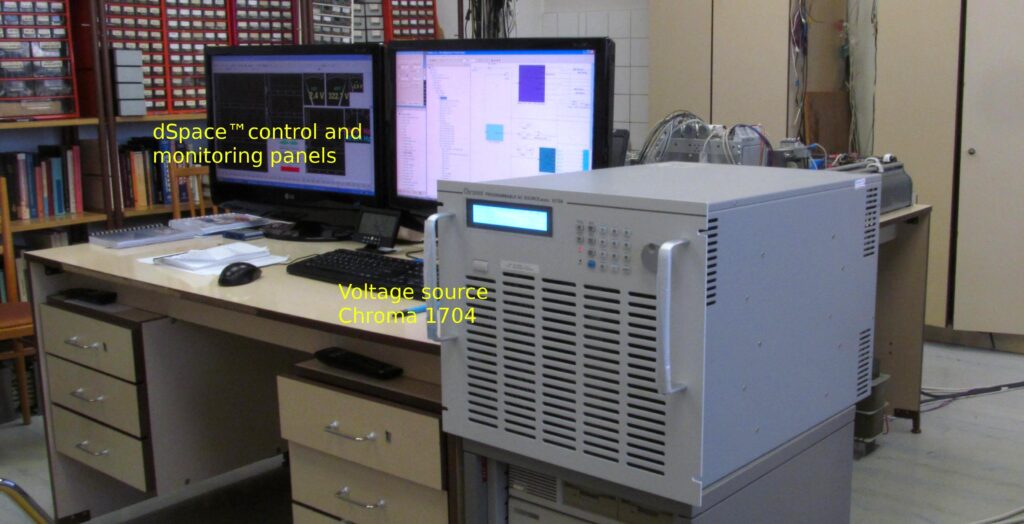

Fig. 1. Laboratory setup
Effective methods of power control of converters on the grid
Control methods developed either without the often accepted simplification assumptions or under conditions that are less predictable have been proposed, and thus the analyses obtained in this way can complement the existing research results. We focused mainly on predictive control methods of inverters on the grid, especially on generalized predictive control (GPC), which we analysed, performed simulation experiments and compiled the basis of the experimental workplace. GPC is based on the transmission functions of the system model and of faults. The perturbation model can be understood as the inclusion of an observer, which improves the suppression of interference in the control loop. The target function usually also includes a member of the change in the input variables, which affects the control dynamics. Experimental work was performed focused on the behaviour of the inverter (control of active and reactive powers exchanged between it and the network) in cases of fault phenomena in the network.
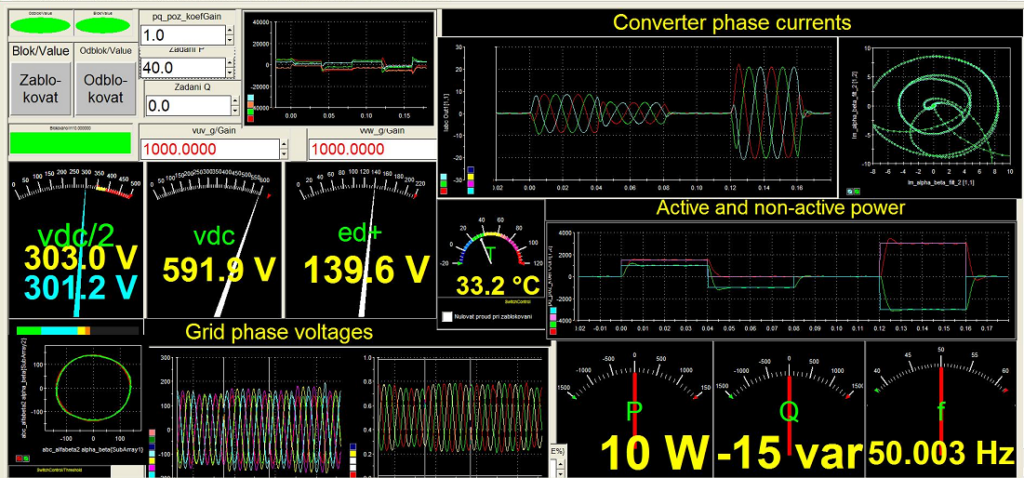
Fig. 2. dSPACE™ control panel
Control of the 7-level voltage converter
In the framework of contractual research for Elektrotechnika, a.s. we have worked on a special variant of 7-level (7L) 3-phase voltage converter with flying capacitors. In contrast to the conventional 7L converter, three of five flying capacitors in each phase have substantially reduced capacity. This makes it possible to decrease production costs and to reduce converter dimensions and weight. The considerable advantage of this variant is that a serial connection of its IGBT power switches (denoted Sx) for the 6kV supply grid and 4,5kV IGBTs can be avoided.
As such a type of a converter could not be controlled as a conventional flying-caps converter, our own control method had to be developed combining 4-level PWM with balancing seven voltage levels. The control system has been developed from a basic analysis and simulation studies, a design of control hardware and the development of control software, detailed verifications and tests on the laboratory model to the cooperation in the 6kV industrial drive realization.
These converters have already been applied by Elektrotechnika, a.s. in powerful fan drives and winding machine drives.
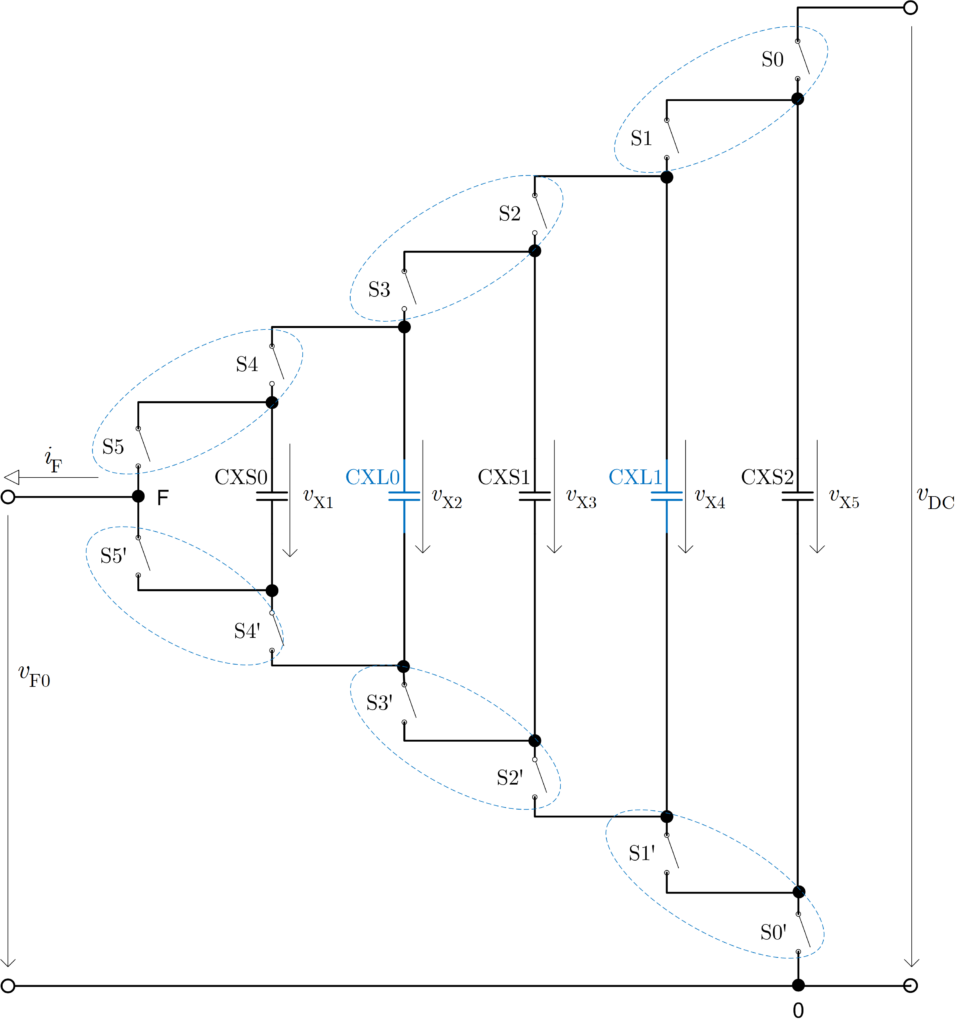
Fig. 3. Topology of one phase of the 7L converter
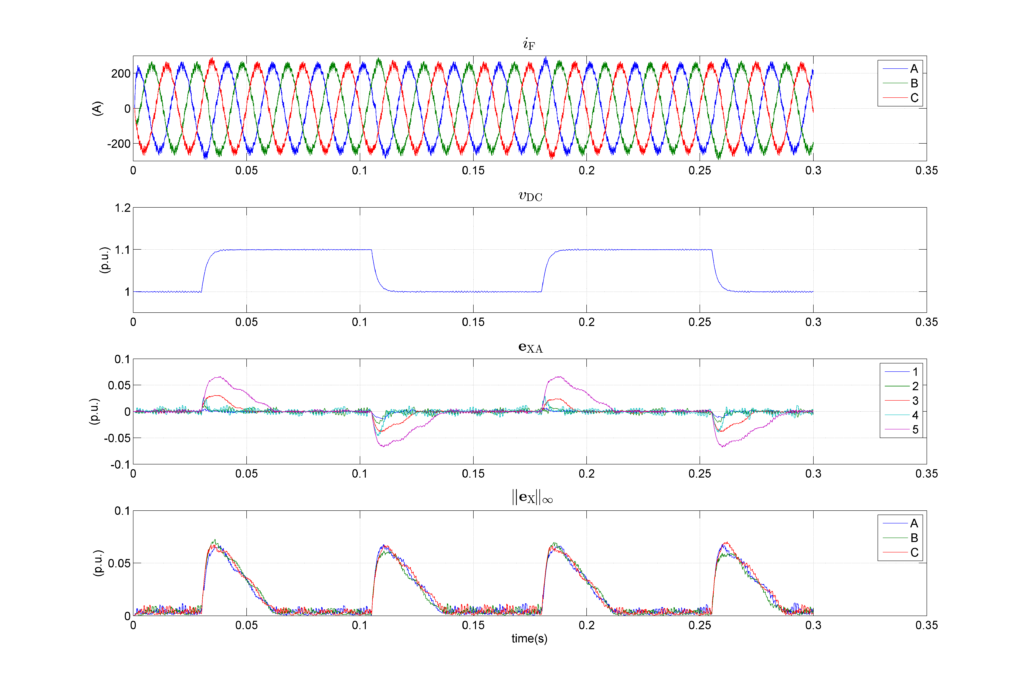
Fig. 4. Example of waveforms from computer simulations
Control of the winding machine drive
In terms of contractual research for Elektrotechnika, a.s. we have developed control software for a winding drive utilizing a medium-voltage synchronous motor (SM). The drive is fed from the indirect frequency converter, which consists of two 7-level converters with flying capacitors. The first one is connected to the 6kV supply grid and works as a PWM rectifier, also known as an AFE converter. The second one generates variable amplitude and frequency voltage for the motor. Each converter is controlled separately and both converter controllers are connected to the higher-level control system via EtherCAT bus.
The stator-flux-linkage-oriented vector control of torque and stator flux linkage has been selected for the motor. The higher-level EtherCAT Master system controls motor speed and shaft positioning. The grid-voltage-oriented vector control of input grid current is used for the AFE converter.
After evaluation of winding drive trials, new functionalities have been added to the control software, which are useful especially for decreasing losses in the converters, for simplifying a commissioning procedure and for eliminating some mechanical inaccuracies during the drive assembly.
The control system for both the converters has been developed from a basic analysis and simulation studies, a design and development of control software, detailed verifications and tests on the laboratory model to the cooperation in the realization of a 6MW/6kV SM industrial drive.
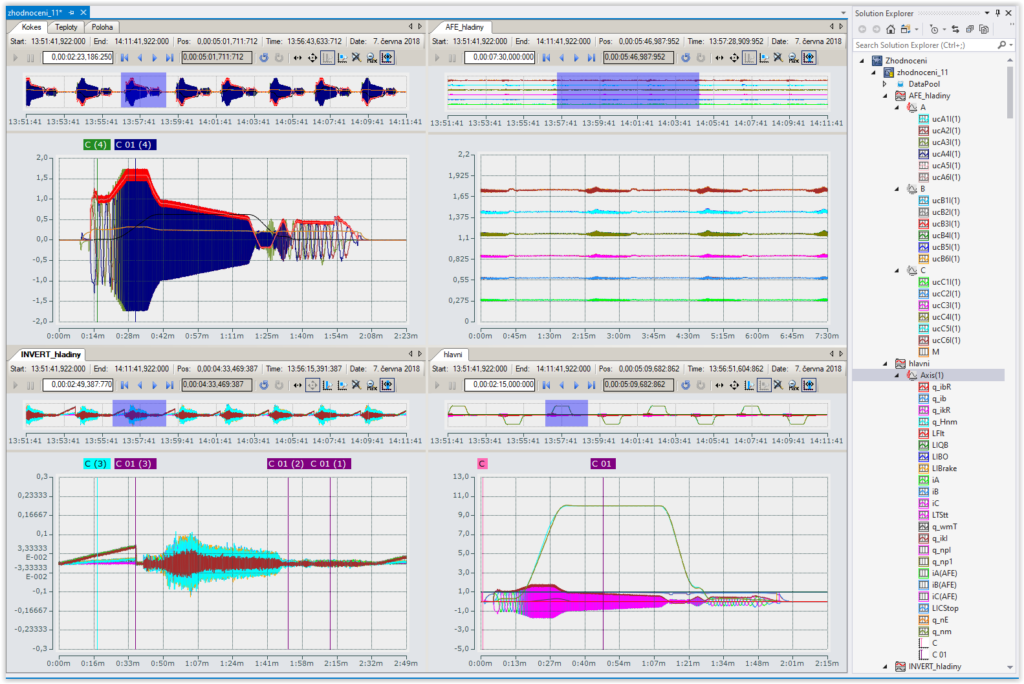
Fig. 5. Monitoring the drive operation using the Beckhoff TwinCAT system
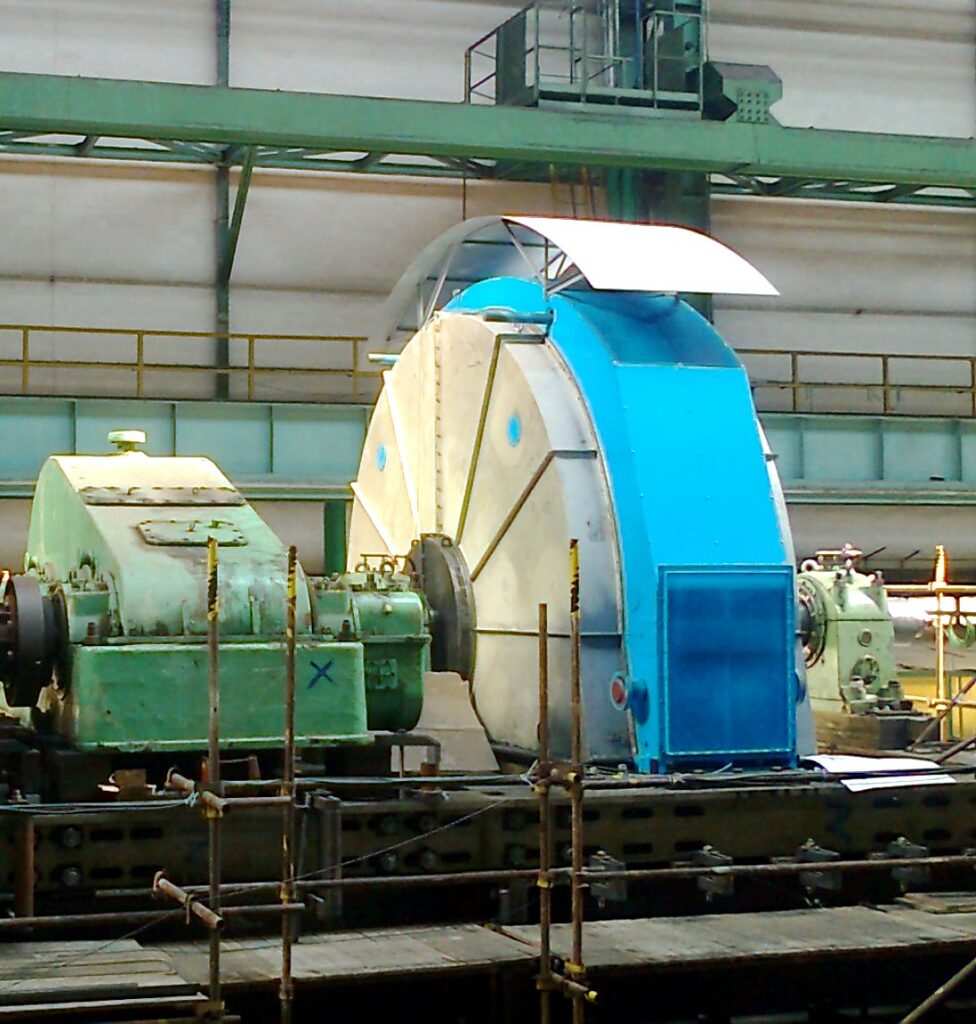
Fig. 6. 6MW synchronous motor on trials in the test room
Selection of equipment:
- dSPACE D1005 control system
- MATLAB / Simulink / toolboxes (SimPowerSystems, DSP, Control)
- two-, four- and seven-level experimental converters for low voltage mains
- dynamometer 120kW / 3000rpm
- LeCroy, Tektronix, and Rohde&Schwarz oscilloscopes
- development tools for C6000 TI microcontrollers
- programmable and non-programmable power voltage sources (e.g. Chroma, Elfis, rotary autotransformer MEZ)
- Yokogawa power analyzer, ZSAC programmable load
Ing. Martin Čerňan, Katedra elektroenergetiky FEL ČVUT
Flicker Effect Mitigation Techniques in Industrial Network with EAF (Electrical Arc Furnice) Using SVC (Static Var Compensator) with Advanced Control.
The work focuses on the possibilities of improving the SVC control system for more effective reduction of the flicker effect. Experimental laboratory equipment was used to verify the properties of the proposed techniques. To simulate the dynamic behaviour of EAF, data measured from real operation were used, which were implemented into an experiment using VSC.
Supervisor expert: prof. Ing. Viktor Valouch, CSc., study started in 2014, defence in 2021.
